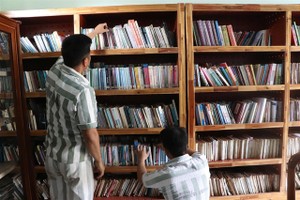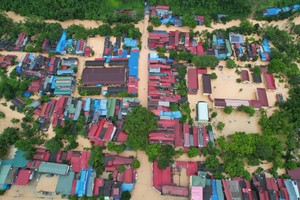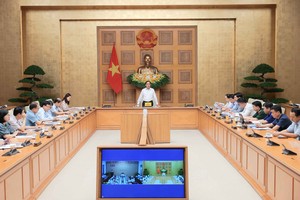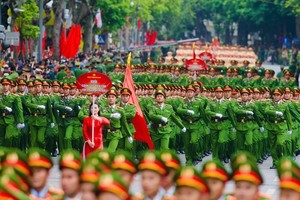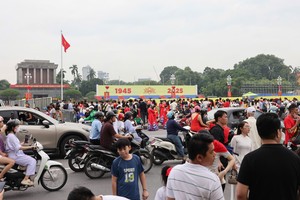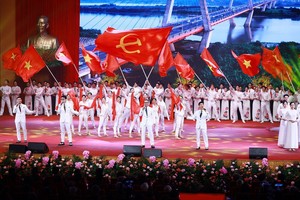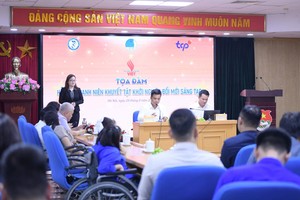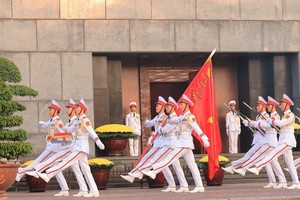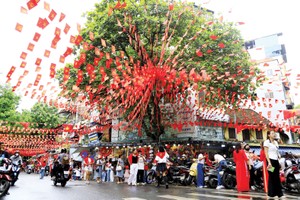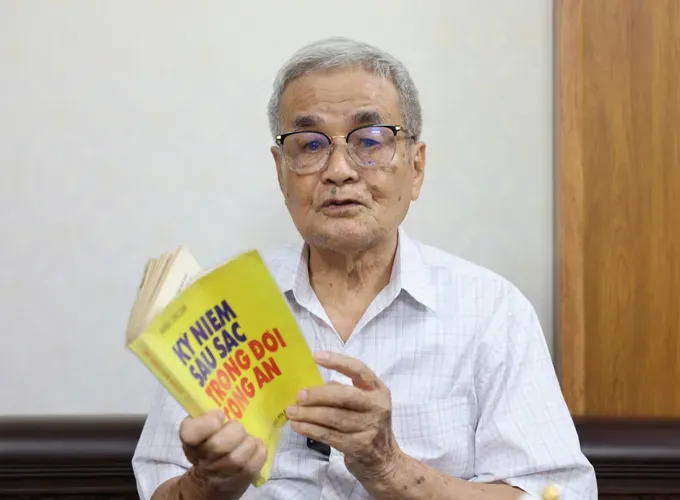
Prized card, uneven game
On one side of the board stood the fledgling People’s Public Security forces of North Vietnam. On the other, the CIA, the world’s most notorious intelligence agency. The game board was uneven, and at its center was a single, pivotal piece: the spy with the alias “Ha Long”, codename Ares, whose real name was Pham Chuyen.
A disaffected Northerner who had been expelled from the Party, Chuyen went south in 1960 and was quickly recruited by the CIA and U.S. military intelligence to intensify their espionage and sabotage campaigns against the North.
To the CIA, Ares was a trusted, impeccably trained agent capable of operating independently deep inside enemy territory. To the forces of North Vietnam, he was the “golden link” – a unique opportunity to launch a counter-operation. CIA files classified him as a unilateral operative, able to build his own network. But from the moment he set foot back in the North, his every move was under the invisible control of the security forces of North Vietnam.
The opening gambit was patience. Rather than moving in at the first sign of Ares’s sea infiltration in Quang Ninh Province, the revolutionary forces quietly monitored his every step. Every detail was meticulously logged, including his radio frequencies, his transmission schedules, even his personal habits. The CIA’s script was allowed to play out precisely as planned, letting them believe their asset was secure and the mission was proceeding smoothly.
Ares returned to his home village and, preying on family ties, persuaded his younger brother to help him. Hiding in a nearby forest, his brother powered a hand-crank generator as Ares transmitted his first coded message. The signal traveled from the coast of North Vietnam across the ocean to “Bugs” – the codename for the US telecommunications base in Subic Bay, the Philippines – before being relayed to the CIA in Saigon.
There, it landed in “Room 45”, a top-secret unit established by the CIA in 1958. A CIA officer named Robert Kennedy triumphantly held up the decoded message, exclaiming, “Success!” Neither he nor anyone in Room 45 knew they had just stepped onto a game board where they would be outmaneuvered for the next ten years.
From that moment, Pham Chuyen lived a dual existence: a CIA spy to his handlers, and the revolutionary agent on the counterintelligence front. According to declassified files from the Ministry of Public Security, North Vietnam’s security forces crafted over 300 fake intelligence reports for Ares to send, detailing false coordinates for missile sites, bridges, railways, factories, and other high-priority targets for the US Air Force.
“The reports were fake, but they were detailed enough to create genuine belief in the enemy”, recalled Colonel Nguyen Van Nhan, a rare surviving witness who was directly involved in the operation, codenamed Case File BK63.
These fake reports sent by Agent Ares were masterpieces of deception, containing a convincing blend of real and fabricated details with precise coordinates. The intelligence was so believable that the South awarded him 12 medals.
“The writing style had to be flawless and perfectly mimic Ares’s voice”, Colonel Nhan shared. “In a 10-year battle of wits, if you want to extract information, you also have to provide information they believe. Every detail we sent was a brain-straining calculation. This challenge had no gunshots, but there was no room for error.”
According to Senior Lieutenant Colonel Cam Tuan (reconnaissance police officer in the Northwest region from 1963-1969), the victory in the counterintelligence “battle of wits” was not just the achievement of the agents directly involved. “The victory is the achievement of an entire collective of the Ministry of Public Security”, he shared. He stressed that every tactic received direct guidance from above, with all units coordinating flawlessly to secure victory.
Human element of tradecraft
On this front, the revolutionary counterintelligence officers went head-to-head with the CIA. Many Vietnamese spies recruited by the CIA were captured within hours of parachuting into the North and were subsequently persuaded – or “won over” – to operate their radios on behalf of Hanoi.
For Colonel Nguyen Van Nhan, Case File BK63 was not just a story of sharp tradecraft, but a profound lesson in the power of humanity. “Ares was a highly trained operative who had even passed lie detector tests, so persuading him wasn’t easy”, he remembered. “The turning point came when Comrade Nguyen Tai, a high-ranking director, personally took over the interrogation and simultaneously implemented a humane policy towards Ares’s mother and brother. That is what truly won him over. To put his mind at ease, I once personally took his young daughter to the hospital for a tonsillectomy. Years later, when we met again, she still called me ‘uncle’ and thanked me.”
CIA did suspect at times that Ares had been turned, but they had no proof. Furthermore, he was their only successful sea infiltration; other agents had simply vanished. They were forced to keep trusting him.
To support their “excellent spy”, Saigon successfully resupplied Ares five times, providing everything from food, gold, and money to cameras, radios, and explosives.
Through these operations, the revolutionary forces identified five other enemy contacts, captured two entire reinforcement teams (17 agents) the moment they landed, and seized 54 crates of equipment. That captured gear was promptly sent south down the Truong Son Trail to supply the frontline.
By the end of the 10-year battle, Case File BK63 had successfully passed 13 of the enemy’s security checks, transmitted 307 pieces of false intelligence, and led to the capture of dozens of spies and a significant amount of modern weaponry. The revolutionary agencies had directed the enemy to make six resupply drops, all while gathering critical military intelligence that helped protect the rear and support the frontline.
When the triumphal hymn of national unification rang out in the spring of 1975, many stories of heroism were told. But the stories of the counterintelligence front – where the CIA’s “ace” became a pawn in the hands of the People’s Public Security – remained classified. It was a victory without gunshots, one that resounded with the strength of Vietnamese intellect, bravery, and humanity.
In the entire struggle against spy commandos for over a decade (1961-1973) throughout North Vietnam, the revolutionary forces captured and eliminated 166 teams that infiltrated by air and sea, totaling 885 spy commandos; seized hundreds of tons of weapons, radio transceivers, and operational equipment; repelled 75 teams that infiltrated across the border and 175 maritime commando teams; and successfully waged 27 special case operations using the tactic of “exploiting the enemy’s people to fight the enemy”, capturing and eliminating 353 agents.
